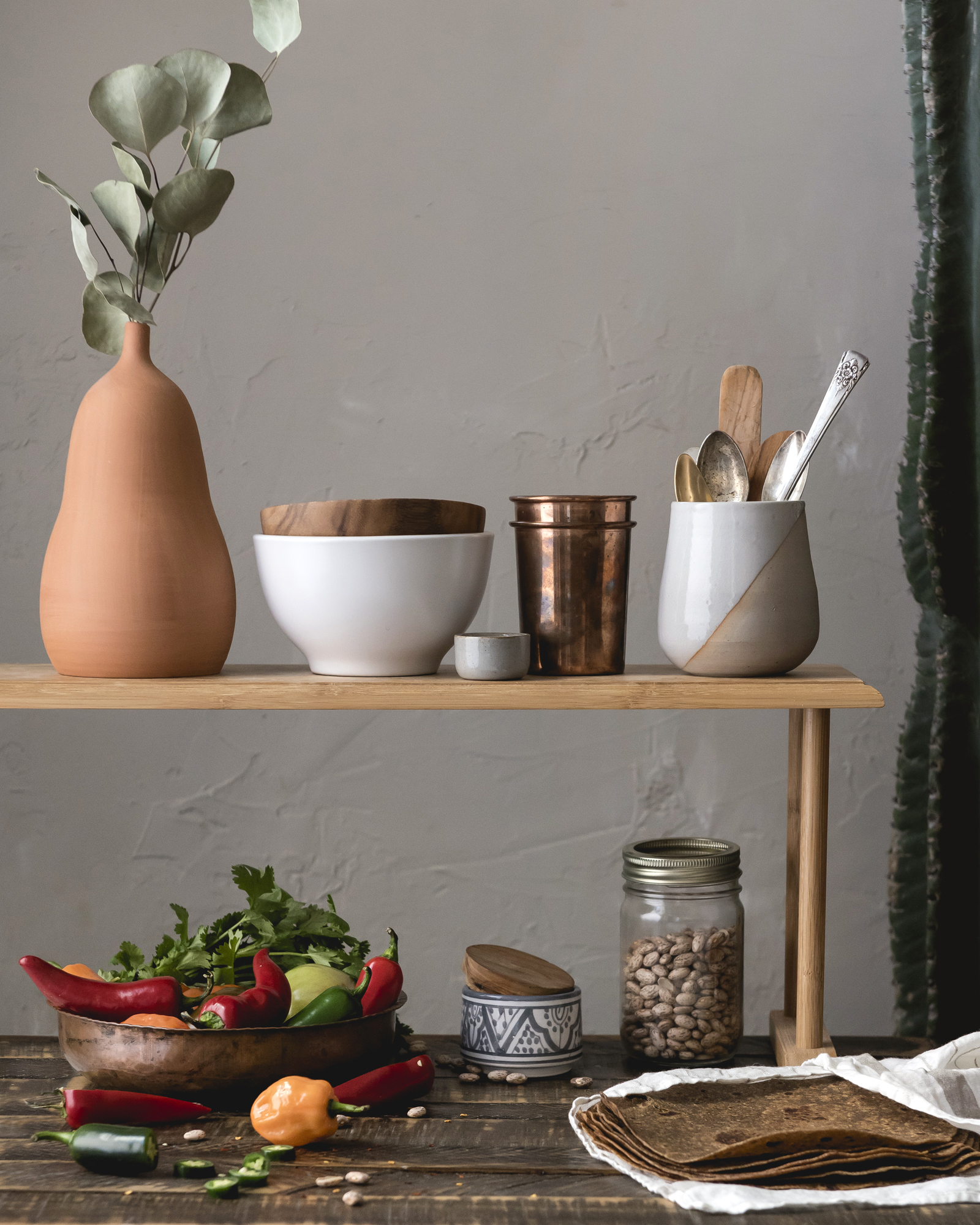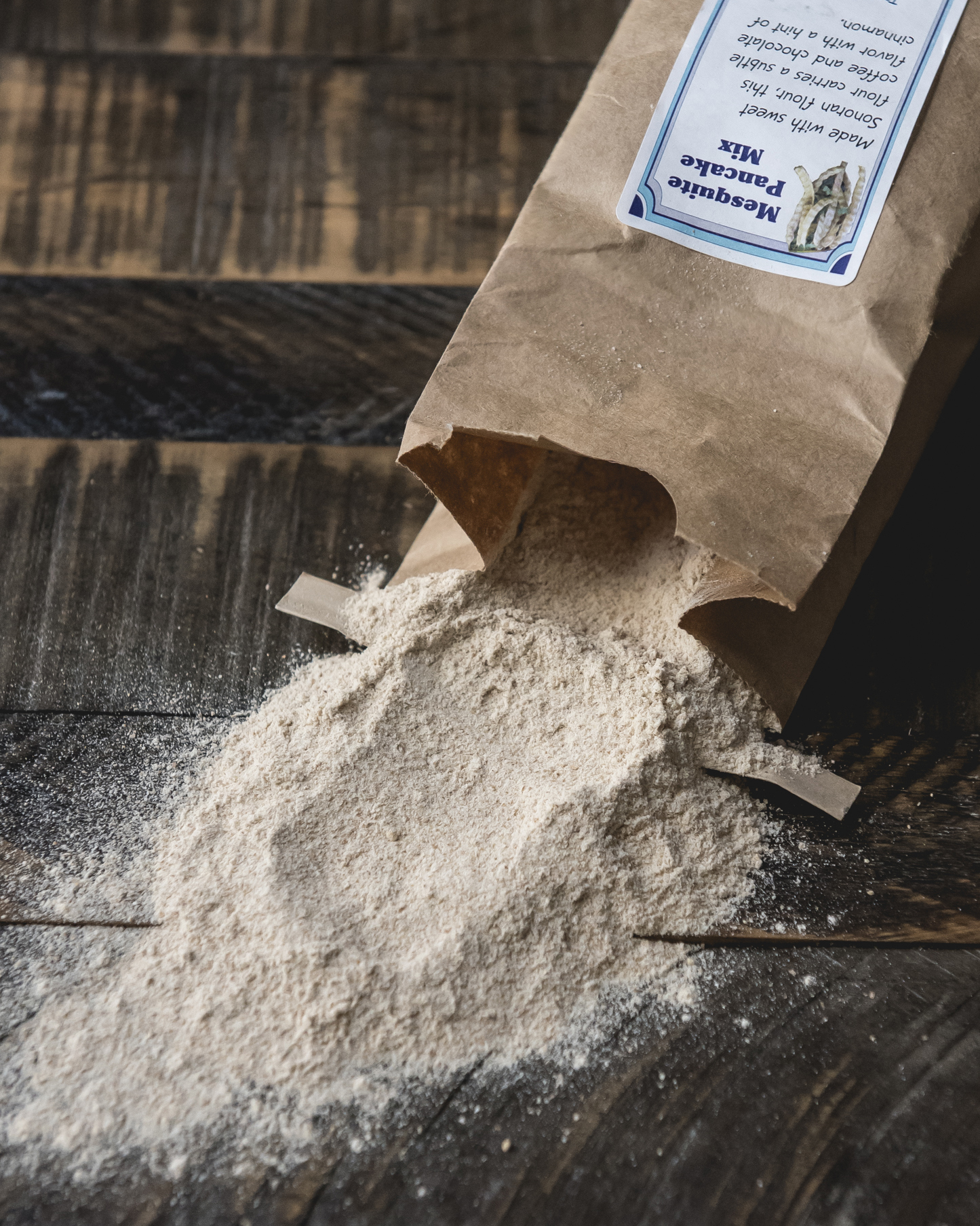
Is Mesquite Flour the Healthiest Gluten-Free, Paleo Flour?
Alternative plant-based flours and sweeteners have been having a moment for a while now, from the familiar faces of stevia and monk fruit to more esoteric options like tigernut or acorn flour.
The latest gluten-free flour to be gaining momentum is mesquite flour, originally a staple Native American crop popular among the Piman tribes of the Sonoran Desert. While mesquite is familiar as an ingredient for savory marinades and smoky barbecue seasonings, mesquite flour has a sweet, nutty flavor (often likened to brown sugar), and is a gluten-free, low-glycemic alternative to conventional flours. Because it’s high in protein and fiber, however, many people have also started using it like a protein powder in smoothies, boosting nutrients with the help of a whole, plant-based food.
Unlike other superfood crops, however, mesquite is low-maintenance: it grows in the high, arid plains of the desert with little water. In a world increasingly plagued by drought (and where your favorite healthy snacks often come under fire), mesquite presents itself as a quick-growing, sustainable alternative– another example of desert foods making their way into the mainstream.
Whether you’re looking for a new flour alternative or just want to sweeten up your baking without trashing your blood sugar levels, we’ve compiled a rubric of everything you need to know about mesquite flour, below.
The Desert’s Finest
One of the most common desert shrubs, mesquite grows throughout the Southwest and is a pollinator-friendly plant. Another member of the pea family rising to wellness infamy (pea protein is practically inescapable now), mesquite trees typically come in one of three varieties: the velvet mesquite (incidentally, this is a great name for an indie Southwest alt-rock desert band), screwbean mesquite (also a pretty great alt-rock band name), and honey mesquite. (All told, there are some 40 varieties of mesquite.) Though mesquite tress grow in the relatively empty arid and semi-arid areas of the Chihuahua, Sonoran, and Arizona deserts, they are quite versatile beyond their culinary properties. The wood can be used to build housewares, the bark is traditionally used as a fabric, and the various parts of the plant boast a whole host of medical properties, from an infusion of its leaves producing eye drops to its sap being effective for a sore throat.
Why It’s Good For You
Mesquite flour is serious flour-alternative contender: it has triple the fiber of whole wheat flour, a high protein content, and is rich in various nutrients and minerals like calcium, magnesium, potassium, iron, and zinc. (Mesquite is especially high in the amino acid lysine.) Whether or not you’re on a gluten-free or low-glycemic diet, mesquite flour can be an effective way to up the fiber content of bread– though it does have a slightly grainier texture than standard wheat flour.
Where to Find It (Even If You Don’t Live In the Desert)
Traditionally, mesquite is harvested in the wild— and still is, with appropriate precautions. The season is calculated by rains, either before the first rain of the summer, or in the dry season at the end of summer and the beginning of fall; foragers should look for pods that have turned from green to yellow-brown. Professional harvesters advise tasting the pulp from pods (what’s in between the shell and seeds) you’ll be collecting and sticking to trees whose pods pass muster. The only real danger with harvesting mesquite (besides the sharp thorns the trees have) are aflatoxins, a toxic chemical that can affect more familiar crops like peanuts and corns. For this reason, foragers advise against collecting mesquite pods from the ground.
For those in other parts of the United States, mesquite flour is available from a variety of vendors in a diverse array of forms, from pancake mixes, to mesquite tortillas, to plain old mesquite flour. For true connoisseurs, some vendors even specify what kind of mesquite (the velvet mesquite versus honey mesquite) a product contains.
How To Eat It
When making the mesquite flour itself, the whole mesquite pod (pod and seeds) is dried and then ground up, a process that can be undertaken at home with a blender or food processor, but one which is best left to professionals or to professional mills to get a thorough, smooth texture.
For baking, mesquite flour can be used in place of your standard flour, but just be aware that because it is gluten-free, it does better in recipes where a good crumble is called for (like biscotti, pie crusts, or baklava). If you’re not sure about proportions, you can always experiment by mixing it into other gluten-free flours you have first, and slowly adjusting the proportions. If full on baking isn’t your style, try mixing mesquite flour into your smoothie rotation as a protein powder alternative; otherwise, you can add a few spoonfuls to overnight oats for an extra dash of sweetness (and nutritional benefits).
One of the most traditional recipes for mesquite is pinole, a simple drink that pairs mesquite with saguaro seed meal (harvested from the giant saguaro cactuses). But in general, mesquite flour can be adapted into any sweet baked good– especially if you brew up a match of “mesquite molasses,” a caramel alternative that can be used to make mesquite margaritas. (Another alcoholic iteration of mesquite is in the works; Mesquite Willy’s is experimenting with using the chaff to make a beer.)
To learn more about mesquite flour and its many surprising culinary applications, visit Desert Harvesters. Interested in other sustainable food products? Check out or list of companies who are turning food waste into delicious snacks.




































